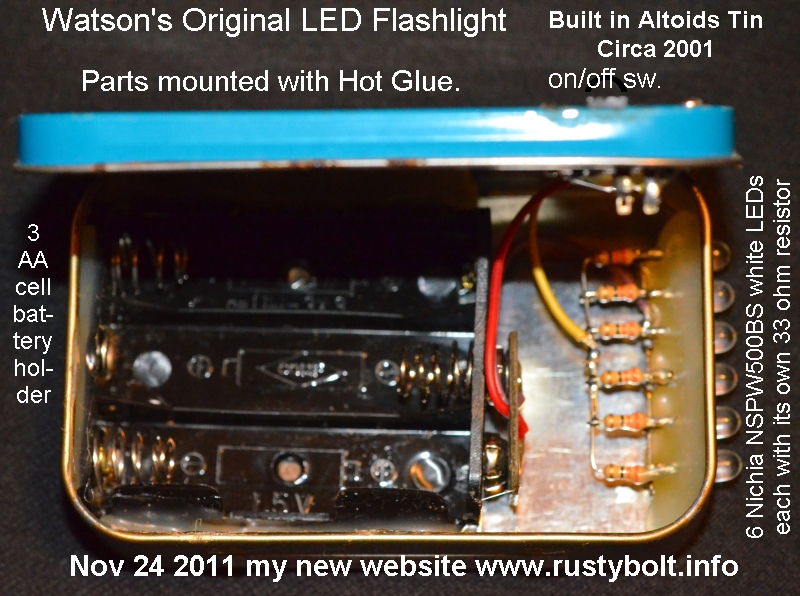 Back in 2000 and 2001, Californians faced an electricity shortage crisis caused by market manipulations by companies the likes of Enron that stole tens of billions of dollars from Californians. The electric companies implemented rolling scheduled blackouts to prevent unexpected outages. During that time, many people were afraid of being caught in a dark place such as an elevator without any source of light. I often carried a Mini Maglite but I wanted a flashlight (AKA torch) that didn´t have an unreliable incandescent bulb that would often burn out.
Back in 2000 and 2001, Californians faced an electricity shortage crisis caused by market manipulations by companies the likes of Enron that stole tens of billions of dollars from Californians. The electric companies implemented rolling scheduled blackouts to prevent unexpected outages. During that time, many people were afraid of being caught in a dark place such as an elevator without any source of light. I often carried a Mini Maglite but I wanted a flashlight (AKA torch) that didn´t have an unreliable incandescent bulb that would often burn out.
At that time, LED flashlights were not available. The individual white LEDs were available but were expensive, one example being Radio Shack which sold them for $4 to $5 apiece. I bought a few and experimented with them and came up with the design shown in the picture. But R-S LEDs were too expensive and had a bluish ring and a wide light pattern, which didn´t give a tight beam at a few feet. I ordered a hundred NSPW500BS white LEDs from Nichia at about 2 dollars apiece, which saved a lot of money and gave a good beam of light at several feet.
I built several of these and they have become a handy tool around the house and in the car. I used an Altoids tin, a three AA cell battery holder, one or two on/off switches and from 3 to 8 white LEDs in the end of the tin. Each LED had its own 33 ohm 1/4 watt resistor to limit the current. One had two rows of 4 LEDs each, and a separate on/off switch for each row which gave a high-low light output.
I had not done any experimenting with a single AA cell and voltage boost circuit, which later came to be popularly known as a Joule Thief.
Later, LED flashlights became available, but at first were expensive or had low light output. Later, LED flashlights started appearing in stores, but they had some deficiencies. The most important one in my opinion is they use batteries that are expensive or hard to get. For example, they often use three AAA cells which cost three times as much as a single AA cell, take up more space, but have about the same capacity.
The flashlight manufacturing companies seemed to be unwilling to add a simple circuit to their lights that would boost the AA cellś voltage to light a white LED. Back then I started experimenting with a simple voltage boost circuit that later became known as the Joule Thief. More on this in my next blog.